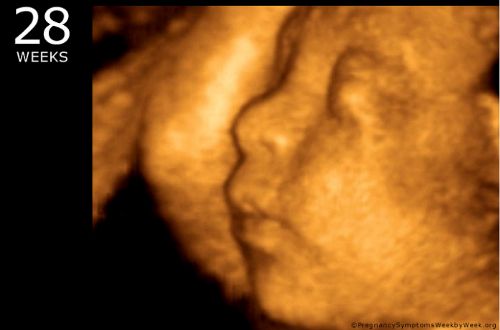I was 28 weeks pregnant when I entered the small, windowless waiting room of the Washington Surgi-Clinic for my abortion appointment. I filled out paperwork and gave the front desk nurse $11,400 in cash. I asked if it was weird that I was paying in cash. She said it wasn’t. I took a seat alongside several other women.
I was nervous. But not because I was there for an abortion. I was undercover. It was January 2022, and I had agreed to partner with Live Action to secretly record my visit to this Washington clinic in hopes of showing people the true nature of late-term abortion. Live Action has investigated the Washington-Surgi clinic before and uncovered some horrifying truths. But the public remains largely unaware of the realities of late-term abortion clinics. I was hoping to help change that. There is a wide chasm between the rhetoric of pro-choice activists – who argue women choose abortion with full knowledge and autonomy – and what I experienced that day.
It was a half-hour before a nurse called me back. She drew blood, recorded my vitals, and viewed my daughter Ruby on an ultrasound. She explained the abortion would be a three-day process: two days for dilation and the third day for extraction. She assured me Ruby would feel no pain before she passed away.
I could feel Ruby turning and stretching, and her movements made me tearful. My emotional reaction surprised me. I had expected to be angry, but I was just heartbroken. I pictured her tiny face. Of course, I knew I wasn’t about to do anything that would endanger her. But I also knew I was in the presence of people who would, if I asked them to, willingly and quite literally tear my little girl apart. While I knew she was safe with me, the horror of the room made me feel as if I needed to protect her.
Click here to sign up for pro-life news alerts from LifeNews.com
Crying, I told the nurse I felt stupid, and that I should have made a decision sooner. She was reassuring. “Yes, I know, it’s very hard. You can talk to us. We’re here to help in any way we can.” But she didn’t ask why I wanted the abortion, whether I was sure it was the right decision, or whether I was aware of or interested in any other options.
I returned to the waiting room, sorrow washing over me. I reminded myself that Ruby and I would be leaving shortly, that she was safe and we’d both be fine. But that mantra offered no comfort for the women sitting around me. Some seemed calm. Others were crying. One woman complained of feeling ill. We sat together mostly in silence, but I wanted to turn to them and ask “Why are you here? How can I help?”
Before Ruby, I’d birthed three children. With each pregnancy, a medical professional asked me questions to screen for domestic violence and mental health issues as a safety protocol. In stark contrast, although I wept intermittently during a multi-hour appointment to abort my healthy 28-week child, not one person screened me for coercion or psychological issues.
No one asked about Ruby’s medical history or health status, either. This uninterest makes sense; after all, the Washington-Surgi clinic performs abortions through the third trimester for any reason. It is legal and readily accepted. In fact, the nurses repeatedly reassured me that there was nothing wrong with or even unusual about me, a healthy woman, seeking an abortion of my healthy child at seven months.
After another hour of sitting in the waiting room, a second nurse called me back. She discussed some potential complications. She warned of early labor, calling it a “spontaneous abortion.” I asked what I would do if that happened in my hotel room that night. “It doesn’t happen very often. But if it does, don’t panic. [The doctor] could come and help you take care of it, or we could just tell you what to do with the remains,” she said.
The nurse began to hand me medications in advance of the first dilation. The list included acetaminophen, an antibiotic, and Xanax. “Those guys are just there to relax you,” she said with a smile.
I asked if it would be possible to speak to the doctor performing the abortion before taking the medications, but she said that wasn’t how it worked. According to her, the doctor wouldn’t see me until it was time to begin dilation, and by then the medications would need to already be in my system.
Considering my options, I asked whether or not Xanax would affect my clarity of thinking, to which she replied “No, it shouldn’t.” I reiterated that I would prefer to speak to the doctor first, but she didn’t budge. So, I told the staff that I had changed my mind. They returned the cash I paid (minus ultrasound fees), and I left.
As I walked out of the waiting room, my mind again turned to the women around me. It felt like I was abandoning them and their children in the uncertain hope that this undercover work would protect more women and children in the future. It was an abysmal calculus. I’ve thought repeatedly about those who stayed in that waiting room after I left, and of all the women and children who have entered it since.
LifeNews.com Note: Monica Snyder is the executive director of Secular Pro-Life, an organization that uses non-religious arguments to promote the pro-life perspective. Snyder worked as an investigator with the human rights organization, Live Action, to investigate the Washington-Surgi Abortion Clinic to expose their late-term abortion practices. She also serves as the Executive Director of Secular Pro-Life.




